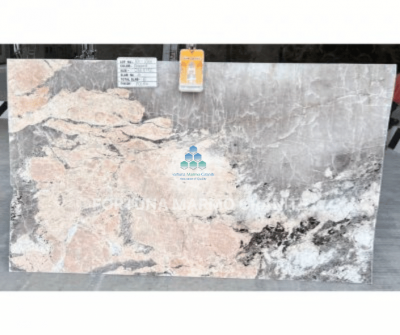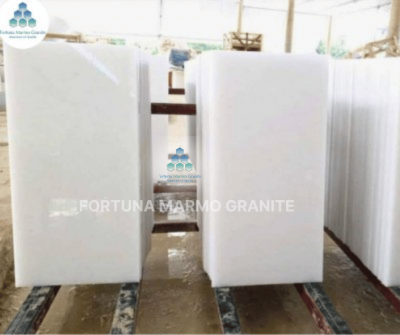Understanding the Differences Between White Marble and White Quartzite
When it comes to choosing the perfect stone for your countertops, flooring, or other surfaces, two popular options that often come into play are white marble and white quartzite. While both stones offer elegance, sophistication, and a timeless beauty, they are distinct in terms of their composition, durability, and maintenance requirements. In this blog post, we'll explore the key differences between white marble and white quartzite, helping you make an informed decision when selecting the ideal material for your next project.
What is White Marble?
White marble is a natural stone known for its luxurious and classic appearance. It has been used for centuries in architecture, sculptures, and as a surface material for both functional and decorative purposes. Marble is primarily composed of calcium carbonate, formed when limestone undergoes metamorphosis under high pressure and heat. This process gives marble its distinctive appearance, featuring veining patterns that vary in color and intensity.
White marble is prized for its clean, polished look and versatility in both traditional and modern settings. Some of the most well-known varieties of white marble include Carrara, Calacatta, and Statuario, each with unique veining patterns and color nuances.
What is White Quartzite?
Quartzite, on the other hand, is a naturally occurring metamorphic rock formed from sandstone under intense heat and pressure. The primary component of quartzite is quartz, which is one of the hardest minerals found in nature. When sandstones are subjected to these high-temperature conditions, they fuse together and transform into a much denser and more durable stone than its original sandstone counterpart.
White quartzite is a specific variety of quartzite, typically characterized by its white to light gray base color, with occasional veins of gray, gold, or other shades. It can resemble marble due to its appearance, but the differences in composition and structure give it a distinct set of properties that set it apart.


Key Differences Between White Marble and White Quartzite
1.Composition and Hardness
One of the main differences between white marble and white quartzite lies in their composition.
White Marble:
White marble primarily consists of calcium carbonate. It's a relatively soft stone but offers versatility in appearance. However, its softness makes it more susceptible to scratches, dents, and etching from acidic substances such as lemon juice or vinegar. While marble suits many design applications, it needs regular care to preserve its pristine look.
White Quartzite:
White quartzite, on the other hand, is composed mostly of quartz. This mineral ranks 7 on the Mohs hardness scale, making quartzite much harder and more durable than marble. Its superior strength allows it to withstand daily wear and maintain its beauty for years.
2.Durability and Maintenance
White Marble:
Because of its soft nature, white marble is more vulnerable to damage from impact, heavy use, or acidic substances. Scratches, stains, and etching often occur on marble surfaces, especially in kitchens where food and drinks touch the stone. To maintain its beauty, marble countertops need regular sealing to protect them from stains and moisture.
White Quartzite:
White quartzite is significantly more durable. It resists scratches, stains, and etching, making it ideal for busy areas like kitchen countertops. Although sealing is still recommended, quartzite is far less affected by acidic materials than marble. Its natural strength and resilience make it a low-maintenance choice, requiring less attention and care over time.
3.Appearance and Aesthetic
- White Marble: White marble is known for its luxurious and timeless beauty. It often features bold, dramatic veins that range in color from gray to gold to black, making it a statement piece in any room. The veining is one of the most attractive features of marble, giving each slab a unique look. While white marble offers an elegant aesthetic, the veining can vary, and in some varieties, it may be quite striking, while in others, it can be more subtle.
- White Quartzite: While white quartzite can closely resemble marble in appearance, it typically has a more uniform look. Quartzite veins, while still present, tend to be finer and less pronounced than the bold, dramatic veins of marble. Some quartzite varieties may even have a crystalline or sparkling effect due to the presence of mica or other minerals within the stone.
4.Cost
Both white marble and white quartzite can be expensive. However, prices vary depending on the stone's quality, rarity, and source.
White Marble:
Marble is generally more affordable than quartzite. Popular options like Carrara marble are widely available and cost-effective. On the other hand, rare and luxurious varieties such as Calacatta and Statuario are much pricier. Their limited availability and high demand make them premium choices.
White Quartzite:
Quartzite is harder and more durable, which often increases its cost. The difficulty in quarrying and processing high-quality quartzite also adds to the price. Because of its strength and unique patterns, quartzite is seen as a premium material for elegant and long-lasting surfaces.
Conclusion
White marble and white quartzite are both stunning natural stones that add elegance and sophistication to any interior. White marble showcases timeless beauty and luxurious charm, but it requires more maintenance due to its softer composition. In contrast, white quartzite offers a similar elegant appearance with greater durability. It performs exceptionally well in high-traffic areas and practical spaces where strength is essential.
Your choice ultimately depends on style, function, and budget. Choose marble if you want a classic and opulent look. Opt for quartzite if you prefer a durable yet equally beautiful alternative. Understanding their key differences helps you select the perfect material that aligns with your design vision and lifestyle.
At Fortuna Marmo Granite, we specialize in sourcing and supplying high-quality natural stones, including white marble and white quartzite. With our expertise and wide selection of materials, we are committed to helping you find the perfect stone to bring your vision to life. Contact us today to explore our collection and get expert guidance for your next project!

